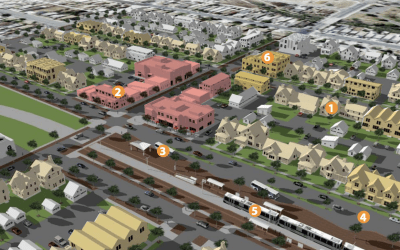Pace Environmental Law Review
Donate to PELR
SPRING 2025 SYMPOSIUM
Writing Competition
GreenLaw – Latest Blogs
Climate Resilient Development at the Local Level: Phoenix Acclimating Desert City Life to the Effects of Climate Change
Municipalities experiencing growth are changing their land developmental strategies in response to the effects of climate change. This is especially true for desert cities that are built on landscapes not meant to maintain large populations. They are challenged,...
Climate Resilient Development at the Local Level: Benefits of Transit-Oriented Development
As populations continue to grow, demand for mixed-use, accessible, and affordable transit options does as well. Transit-Oriented Development (TOD) is a growth model characterized by compact development, a mix of land uses, and multi-modal transportation connectivity....
Advancing Transboundary Adaptation and Conflict Reduction Through the Global Goal on Adaptation
Joseph A. Siegel, Adjunct Professor* The historic decision on loss and damage last November at the 27th session of the Conference of the Parties (COP27 at Sharm el-Sheikh) to the United Nations Framework Convention on Climate Change (UNFCCC) shined a spotlight on the...
Climate Resilient Development at the Local Level: Parking and Adaptive Reuse
In Paris, France, an urban farming startup has begun using an abandoned parking garage to develop a mushroom farm. Cycloponics, an urban farming startup company, has used the abandoned space to develop a mushroom farm. The farm uses rectangular bales suspended from...
Climate Resilient Development at the Local Level: Addressing the Overabundance of Parking
There are a billion parking spots in the US. For every car in the country, there are four parking spots. Yet, the rise of autonomous ride-hailing vehicles, micro-mobility devices such as electric bikes and e-scooters, public transportation, remote work, online...
Climate Resilient Development at the Local Level: ParkSmart Sustainable Parking Initiative
Sustainable parking systems save space, increase energy efficiency, and reduce the environmental impacts of parking garages. Because of these incentives, municipalities and private actors will spend less money on overhead costs like electricity and gas, thus enabling...
Climate Resilient Development at the Local Level: Sustainable Parking Strategies
In the United States, surface parking lots alone cover more than five percent of all urban land, representing an area greater than the states of Rhode Island and Delaware combined. Unfortunately, when municipalities allow soil, vegetation, and trees to be replaced...
Climate Resilient Development at the Local Level: Local Planning and Zoning for Food Production in Arizona
Phoenix, Arizona is a top producer in agriculture with the county ranked number one in the state for the total value of agriculture products sold including milk, poultry, and eggs, with 60% of the farms in the county fewer than nine acres in size. Like many cities in...
Could NYC Manage a Retreat from Flood Zones? Part 2: Land Swaps
In my previous blog I assessed the feasibility of floodplain buyout programs in New York City, ultimately noting that while state and federal buyouts would work well for certain homeowners, they would fail to address the needs of the vast majority of those living in...

